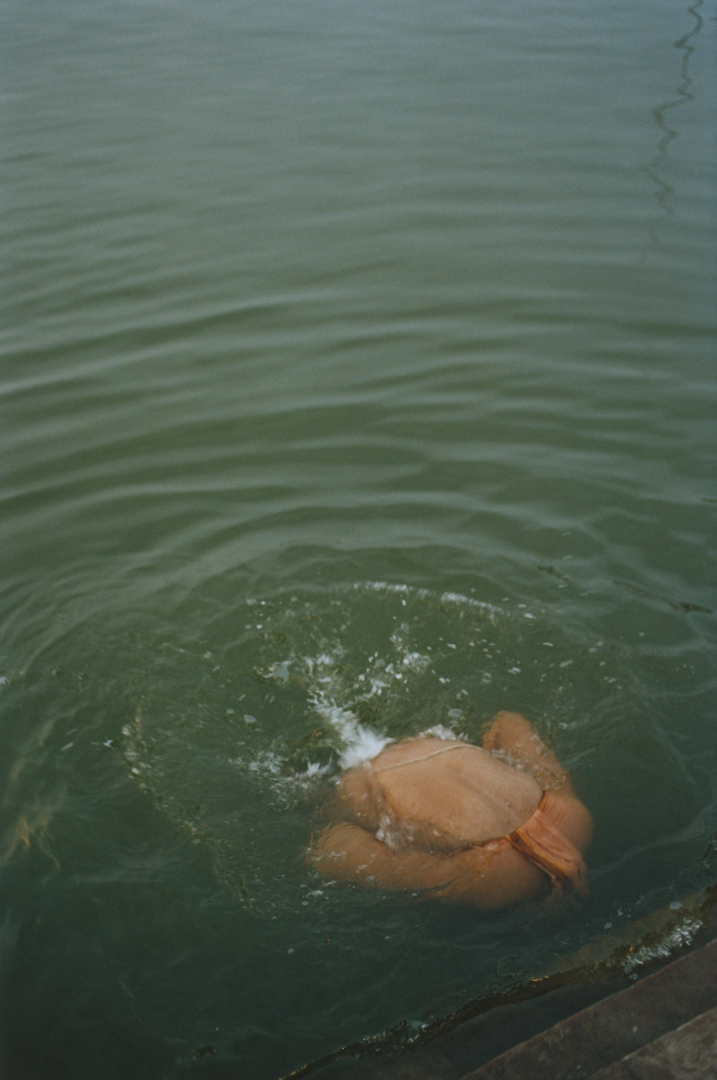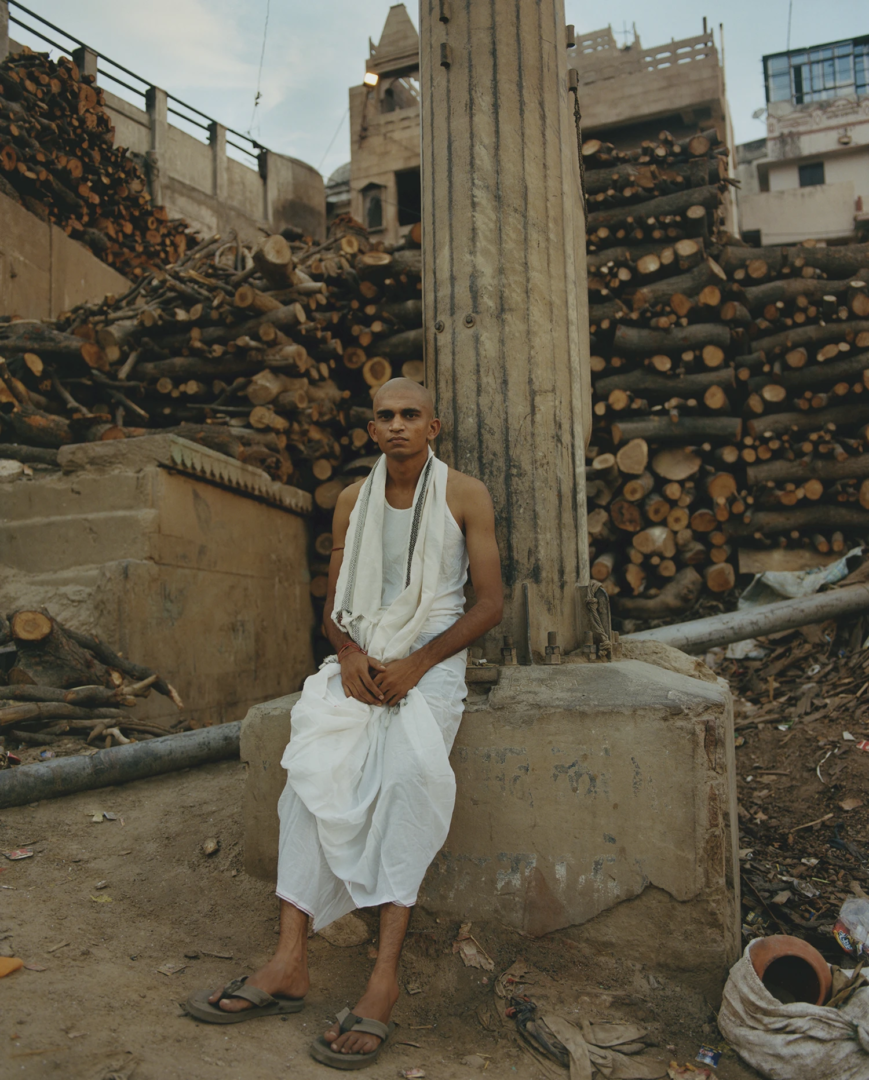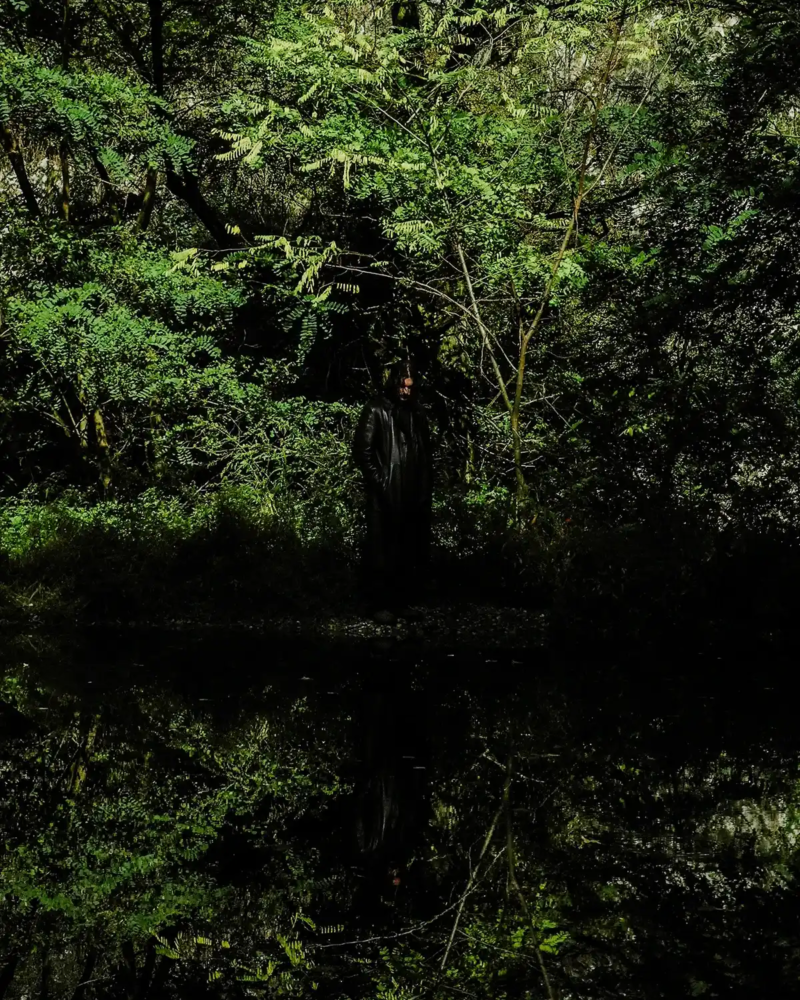
Ash, Water, Plastic: Ritual and Reality Along the Ganges
From the divine descent through Shiva’s hair to the industrial discharge of modern cities, the Ganges tells a story of devotion and ecological crisis – between purification rituals and chemical waste
In Indian cosmology, the Ganges is born from the union of heaven, mountain, and plain
In the Indian imagination, the Ganges does not rise from a mere mountain spring but from the union of three realms: heaven, the Himalayas, and the plains. According to legend, King Bhagiratha pleaded with Brahmā to release the celestial river so he could free his ancestors from their cursed afterlife. Shiva, to soften the divine flood’s impact on Earth, caught the descending water in his tangled hair before letting it flow gently across the land.
Through this sacred descent, the Ganges became a central ritual medium. During the 2013 Kumbh Mela, more than 100 million pilgrims gathered in Prayagraj to bathe in the river’s waters, which are believed to absolve all sins.
Yet modern life has placed unprecedented burdens on this sacred current. The Ganges basin—860,000 square kilometers across eleven Indian states—hosts almost half the country’s population and generates over 40 percent of India’s GDP. Over a thousand cities discharge a combined 6.6 billion liters of wastewater into the river each day. Of this, only 5 billion liters are treated, leaving at least 1.6 billion liters flowing downstream untreated.
The myth of self-purification is fed by both faith and science
The belief that the Ganges possesses “self-purifying” powers draws from two separate origins. The first is religious: as a gift from the heavens, sanctified by Shiva, the river is seen as incorruptible. The second comes from science. In 1896, British bacteriologist Ernest Hankin observed that water taken from Kanpur could inhibit the growth of cholera bacteria. A few decades later, Félix d’Hérelle identified the agents responsible: bacteriophages, viruses that attack and destroy specific pathogens.
These discoveries were the first scientific indication of a unique microbial ecology in the river. Recent genetic studies confirm the presence of active phages in the Ganges capable of targeting harmful bacteria such as E. coli, Salmonella, and Shigella. This phage activity explains why small samples of Ganges water can retain antibacterial properties for weeks in laboratory conditions.
This phenomenon does not come close to neutralizing the chemical and organic pollution now entering the river. In 2024, official water quality testing in Patna measured fecal coliform levels at 92,000 per 100 milliliters—eighteen times the national threshold for safe bathing. Further upstream in Bihar, many points consistently exceed the allowed 2,500 MPN/100 ml.
Bacteriophages are not enough to fight industrial-era pollution
To the biological problem must be added the chemical one. The Ganges is now the world’s second-largest source of riverine plastic pollution, sending an estimated 120,000 tons of waste into the ocean each year. In the Himalayan stretches of the river, microplastic concentrations have reached up to 1,550 particles per liter, mostly from PET packaging.
In Kanpur, tanneries continue to release chromium into the river, despite partial shutdowns and improved treatment systems. Although the overall chromium load has dropped by 47% since 2010, many downstream samples still show toxic concentrations. Heavy metals such as mercury and lead from pulp, paper, and pesticide industries add to the mix, creating a toxic cocktail no bacteriophage can purify.
The health consequences are severe. Diarrheal diseases remain one of the leading causes of child mortality in India. Seasonal peaks coincide with periods of flooding, sewage stagnation, and widespread use of untreated river water. During the 2013 Kumbh Mela in Prayagraj, hospitalizations for gastrointestinal illnesses rose by 32 percent above the annual average.
Government action has improved treatment capacity but not enough
India’s first Ganga Action Plan, launched in 1986, created 25 treatment plants. Official assessments later found that it reduced the organic load in the river by only 15 percent. An expanded version in the 1990s still failed to catch up with the growing urban and industrial footprint.
In 2014, the Namami Gange program was launched with an investment of $3.77 billion and more than 400 projects, including 184 dedicated to sewage treatment. As of 2025, the government reports 5,000 million liters per day of treatment capacity, with additional systems for monitoring effluent quality, particularly in major cities like Greater Noida.
Nonetheless, results remain uneven. Environmental agencies report that most sections of the Ganges in Uttar Pradesh now meet pH and oxygen standards for bathing. Two major pollution hotspots persist between Kanpur and Farrukhabad, where industrial discharge still exceeds the river’s dilution capacity.
India’s National Green Tribunal has issued strong warnings. Ahead of the next Maha-Kumbh, it has ordered local governments to achieve drinking-water quality at the Prayagraj ghats, mandating the closure or redirection of illegal sewage outlets by year-end.

Climate change is accelerating the collapse of the Ganges’ natural resilience
While pollution rises from below, the river’s ability to cleanse itself is under pressure from above. The Gangotri Glacier, symbolic source of the Ganges, is retreating by approximately 12 meters a year. Satellite and field surveys show that the glacier has lost over 1,700 meters since the 1930s, with faster retreat in the past two decades.
Meltwater from Himalayan glaciers plays a role in maintaining dry season flows. As it declines, the river’s capacity to dilute pollutants shrinks. At the same time, climate change is intensifying the monsoon: more erratic rain, more extreme floods. In 2024 alone, nearly 1,300 people died in India due to flood-related disasters, with hundreds more fatalities recorded in early 2025.
These floods not only displace communities—they also wash raw sewage, heavy metals, and plastic waste into the river. As a result, each flood season has become an ecological shockwave, compounding pollution and weakening public health.
The ancient pact between river and people is breaking
For India, the Ganges is what the Nile once was for Egypt: cradle of civilization, economic backbone, and spiritual artery. The ancient pact between the river and its people is fracturing. The contradiction is no longer just symbolic—it is tangible, measurable, and visible. A river once believed to purify all things now requires purification itself.
Yet all is not lost. Infrastructure has improved. As it was reported, oxygen levels have risen in several stretches of the river. Thousands of informal sewage connections have been legally linked to treatment systems. Dedicated wildlife and biodiversity zones are being restored. A cultural shift—toward stewardship rather than exploitation—is slowly taking hold.
Rid Burman – a photographic reportage from the Gange river
In Varanasi, every morning I saw people immersed in the river, chanting prayers to the sun—Surya Mantra. Others invoked Shiva, who, in mythology, contained the Ganges. This is his city. The water that flows through Benares becomes sacred by extension.
The Ganges has been this mythical force. According to legend, she had to be contained by Shiva—otherwise she would have submerged everything from the Himalayas to the sea. The idea of holy water exists across cultures. We all need to believe in something. Even atheists believe in something. Physical and spiritual cleansing are often the same. A warm shower can clear a stressed mind. That simple act is not so different from bathing in a river believed to be sacred.
There’s always a conversation happening between what is real and what is myth. The river is sacred, but it’s polluted. Bodies are cremated next to it. The belief is that being cremated in Varanasi opens a path to a better afterlife. Ash and charcoal have long been used as cleansing agents. There’s a kind of balance—an equation of opposites trying to cancel each other out.
Rid Burman: Notes on Water, Varanasi, and Observation
People in Varanasi are different. There is a sense of inner awareness, of centering, that I haven’t seen in other parts of India. The river is a source of daily life. Whether it’s faith or something else, they use the water, they bathe in it, they seem to trust that it won’t harm them.
The government is working on it. In the past few years, I’ve noticed a shift in attitude. Not everywhere. Purity is subjective. I’ve seen people who live with no attachment, who seem internally clear, but who are physically covered in ash, soot, dirt. At the same time, a more materialistic culture might see purity as a visual condition—or turn it into something exotic.
Rid Burman – Seeing through the surface of Varanasi
There are a lot of stereotypes around places like Varanasi. The dirt, the chaos, the poverty—these are the lenses we’re used to. What I try to show is how all of this—the disorder, the contradiction—is symbiotic. It doesn’t need to be resolved.
That’s cleansing – learning to filter, to shed, to reduce what you carry. That applies beyond the mind. In some traditions, ash and charcoal serve the same function as soap. It’s not just about removing dirt. It’s about a deeper surrender. Oils—coconut, mustard, neem—are part of that process. Sometimes made at home.
Matteo Mammoli












